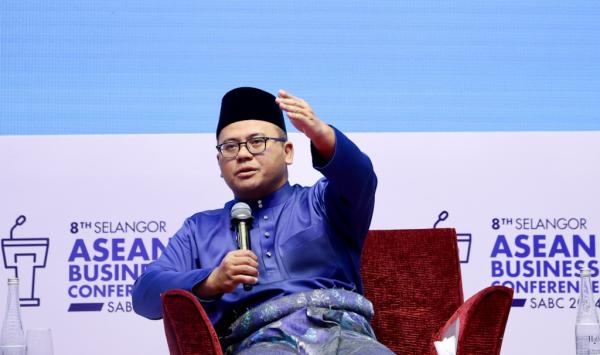By Danial Dzulkifly
KUALA LUMPUR, 26 July — The First Selangor Plan (RS-1), which ensures better coordination and planning at the Federal, state and local government levels, has helped Selangor make greater contributions to the national economy year on year.
Menteri Besar Dato' Seri Amirudin Shari said prior to the RS-1’s introduction, the state was only averaging an annual increase of less than 0.5 percentage points toward the national economy.
Since the launch of RS-1 in 2022, he said the state has seen an increase in its gross domestic product (GDP) contribution by at least 0.5 percentage points each year.
This is because the RS-1 greatly differs from the Malaysia Plan — Federal government's development plan — as it includes planning not just from the public sector but the private sector as well, he added.
"The RS-1 has provided a comprehensive framework for Selangor's development, allowing us to align efforts across different levels of government, including Federal, state and local, as well as the private sector,” he said in a special dialogue session held in conjunction with the Selangor Asean Business Conference (SABC) 2024 at the Kuala Lumpur Convention Centre, here today.
SABC is being held as part of the First Series of the Selangor International Business Summit (SIBS) 2024.
Amirudin was sharing the stage with Penang Chief Minister Chow Kon Yeow promoting Malaysia as a leading investment destination by leveraging local strengths.
On July 2, the Statistics Department (DOSM) announced that Selangor had contributed RM406.1 billion to the country's GDP, accounting for 25.9 per cent, making it the first state to surpass RM400 billion.
Amirudin said Selangor has benefited greatly from its unique geographical location, high human capital as well as having an adaptive and resilient state administration.
He said resilience is one of the most important traits that a government can possess as it enables them to adapt to and absorb great risks such as natural disasters.
“I remember the great floods in 2022 that affected all of Selangor’s districts. However, a survey conducted by DOSM showed that because of our actions and intervention, the state and its people were able to recover from the flood in less than a month,” he said.
He also noted that the state has ramped up its digitalisation efforts, especially following the Covid-19 pandemic, by putting an emphasis on more accessible and efficient government services while providing numerous digital solutions to the public.
Moving forward, Amirudin said while the state has attracted major investments in complex industries such as semiconductor and data centres, he looks towards strengthening the services sector through the construction of major infrastructure projects such as the East Coast Rail Link and a third port in Carey Island.
Another major initiative to ensure Selangor’s continued economic growth is the development of the Selangor Greater Klang Valley (SGKV), which will see the conurbation of four cities, namely Petaling Jaya, Subang Jaya, Shah Alam and Klang.
“These four cities alone have a population of 3.5 million people. So, we have to do something to ensure they are more organised, coordinated, modern and liveable, with the right basic infrastructure for everybody,” he said.
Amirudin added that two of these cities, namely Subang Jaya and Petaling Jaya, have seen steady investment inflow following the separation of Kuala Lumpur from Selangor.
These two satellite cities have benefited greatly from its proximity to the nation’s capital since the 1970s.


